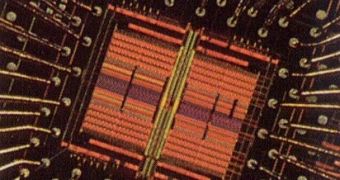California-based Nanochip company has announced that it is on track with the development of a new breed of memory chips with amazing capacities of 1 Terabyte. These chips are alleged to combine phase-change media to cantilever read/write heads under the coordination of a microelectro-mechanical system (MEMS).
The new memory modules will work similarly to a hard-disk drive, but, at the same time, they will be based on the conventional DRAM interfaces. The slaved microelectro-mechanical systems will hover above their cluster of bit cells to read and write phase-change media. According to the manufacturing company, sampling will begin in 2009, with mass availability slated for 2010.
"We are well on-track to meet our original schedule of reaching full commercialization of our first product offering by 2010," said Gordon Knight, Nanochip chief executive officer.
The potential bit cells are 2 by 3 nanometers wide, and their tiny dimensions could easily qualify them for accomplishing the terabyte-per-chip goal. However, the first samples will come with 15-by-15 nanometers bit cells and will only be able to deliver capacities of up to 100 GB per chip.
Nanochip foresees that it will double the capacity once a year without the need of scaling down the 1-micron geometry used during the production process. The doubling will be possible due to the improvements in the media, as well as in refining the MEMS cantilever read/write heads for maximum accuracy.
"Nanochip's technology is well positioned to provide memory capacity with exponentially higher storage densities at a cost per gigabyte significantly below that of flash technology," said Keith Larson, vice president and director of manufacturing, memory and digital health at Intel Capital.
The company is strongly backed up by large companies, such as Microsoft, Intel Capital and JK&B Capital. Nanochip was able to gather $14 million from the above ventures, in order to support its research and development process.

 14 DAY TRIAL //
14 DAY TRIAL //